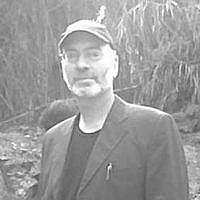What Is the Problem? Is There a Problem?
This shall be the law of the person afflicted with tzara’ath, on the day of his cleansing: He shall be brought to the kohen. [Leviticus 14:1]
Our weekly portion Metzora might be a bit late to tell us of the affliction of tzara’ath. Much of last week’s portion, Tazria, covered the condition and the remedy. Indeed, Chaim Bin Attar, known as the Or Hachayim, starts his commentary that the phrase “This shall be the law of the person afflicted with tzaa’rath,” repeated three more times, is superfluous.
What might not be superfluous is the definition of tzaa’rath. The Torah provides us with the symptoms of tzara’ath without explaining the disease or its origins.
The word tzara’ath is a combination of two words “motzi ra” or “issuing a bad name,” in short defaming another person. Some of the sages see this as speaking evil; The Midrash Tanhuma understands tzara’ath as belittling oneself. When a person exhibits arrogance — whether in speech, dress or behavior — he gives himself a bad name and brings upon the condition that is known as leprosy. For example, the young women during the First Temple, who would strut in front of men, their posture erect and their feet emitting fragrance meant as an aphrodisiac.
Another cause of tzara’ath is bloodshed. The lives of Jews are snuffed out through cruelty, neglect, corruption, injustice or collusion. The prophet addresses the people of Jerusalem before the destruction of the First Temple with, “But now murderers,” those who have perverted justice to the point where the killers become the victims and the victims the killers.
The kohen shall go outside the camp, and the kohen shall look, and behold, the lesion of tzara’ath has healed in the afflicted person. [Leviticus 14:3]
Notice the chronology. First, the man is afflicted by an acute skin disease. His own efforts have failed. Even his prayers are rejected. By now, he understands that there is a problem. Finally, he contacts the kohen, or priest. The kohen is trained to diagnose and cure. He is a spiritual physician, which means he treats the root cause of disease, that of unrepentant sin.
Once the kohen is summoned, the victim is already on the road to recovery. He hasn’t yet brought any sacrifices or become subject to purification. The intention itself shows G-d that the victim is serious and wants to end his state of impurity. It’s called turning a new leaf.
Then the kohen shall order, and the person who is being cleansed shall take two live, clean birds, a cedar stick, a strip of crimson [wool], and hyssop. [Leviticus 14:4]
The prophet Isaiah lived through the reign of four kings. He warned of tragedy unless there was a true soul-searching in Israel. His harshest words were for the elite. Their selfishness, corruption and complacency left no room for anybody else, particularly the poor.
And He looked for justice, but behold violence; for righteousness, but behold a cry. [Isaiah 5:7]
Rabbi David Kimche spent much ink explaining Isaiah’s prophecy. He was born in 1160 in Spain into a family of scholars that elucidated the Torah and Talmud and introduced Hebrew grammar in Europe. When the Muslims demanded that the Jews convert, David was taken from Spain to Christian France. At age 10, his father died and David’s older brother, Moses, took over the child’s education. Years later, Rabbi Kimche, known by his acronym Radak, became famous among Jews and Christians for his teachings in Talmud and Hebrew.
The Radak says Isaiah compared the rot within the elite to tzara’ath. Through their control of the levers of power, particularly the courts, the rich and powerful denied everybody else justice, charity and even a home. This medieval scholar, who spent much of his time defending the Jewish faith from attacks by the church, almost taunts the smug elite.
You think that you alone will settle the land because you are powerful and rich…But I tell you that you will be exiled and your great and numerous homes will be laid to waste wherever you sit. [Radak on Isaiah 5:9]
For a society to survive, it must be willing to improve, not merely adapt. At first, societies are generally united because their people worked together to expel colonialism and win freedom. But soon many of these countries turn complacent and the rich become a separate class, served by taxing and enslaving the poor. The feeling in the elite is that the future is certain. Whatever happens, they tell themselves, they will be protected by their money and position — whether in their country or abroad.
Oct. 7, 2023 marked the greatest wake-up call in the brief history of the State of Israel. The massacre of some 1,400 as well as the abduction of well over 200 exposed the corruption, lies and betrayal of a Western-coopted elite that six months after the pogrom has done little more than issue pompous statements and post signs that demand “unity.”
But if the state is complacent, the enemy is not. On April 14, 2024, Iran conducted a massive missile and drone attack that demonstrated its ability to reach virtually every part of Israel — from Haifa in the north to Eilat in the south. Thanks to an arrangement with Washington, the elite in Tel Aviv was not touched. Still, the nearby airport was kept open just in case. Israel called this victory.
In the end, the road to recovery from tzara’ath is little different than with any other disease. First, man must recognize that something is terribly wrong. His skin is no longer its natural color, rather deathly white. Everybody sees the rot. Finally, he must swallow his pride and seek help from the pious believer. He must act quickly and repent.
We are no different. There is no other choice but to change — and the clock is ticking.
Related Topics



